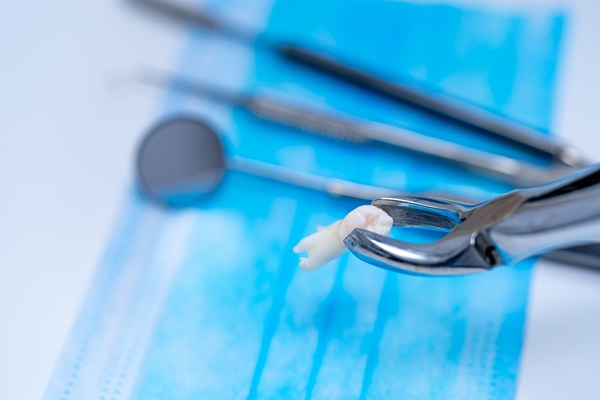 Missing teeth can negatively impact your smile's appearance and health. However, there are treatments out there that can help. Dental bridges are a common dental restoration that can improve oral health and enhance your smile. A dental bridge can be an effective solution if you have lost a tooth due to decay, injury, or other reasons. Here are five things you should know before considering this dental restoration.
Missing teeth can negatively impact your smile's appearance and health. However, there are treatments out there that can help. Dental bridges are a common dental restoration that can improve oral health and enhance your smile. A dental bridge can be an effective solution if you have lost a tooth due to decay, injury, or other reasons. Here are five things you should know before considering this dental restoration.
1. What are dental bridges?
A dental bridge is a fixed prosthetic device made of resin or porcelain that can replace one or more missing teeth. Often referred to as a filler, false teeth, or a partial denture, this treatment involves one or more artificial teeth (pontics) anchored to adjacent natural teeth, dental crowns, or implants. The dental bridge fills the gap left by missing teeth, restoring one's oral function and the appearance of one's smile.
2. Types of dental bridges
Several types of dental bridges can address a patient's specific needs and treatment goals. These include:
- Traditional bridge: This type of dental bridge involves creating crowns for the teeth on either side of the gap and attaching the pontic(s) in between. It is the most common type of bridge and can replace a single missing tooth or multiple adjacent teeth.
- Cantilever bridge: Unlike the traditional bridge, a cantilever bridge only uses one adjacent tooth support. This is ideal when the patient only has one natural tooth next to the gap.
- Maryland bridge: Also known as a resin-bonded bridge, this type of bridge does not require crowns. Instead, the pontic bridge bonds to the adjacent teeth using metal or porcelain wings.
- Implant-supported bridge: When the patient is missing multiple adjacent teeth, the dentist can attach pontics to dental implants that are fused in the jawbone.
3. The treatment process?
The dental bridge process typically requires multiple visits to the dentist. During the initial consultation, the dentist will examine the patient's teeth and gums, take X-rays, and discuss their options. With a traditional dental bridge, the dentist will prepare the adjacent teeth by removing a portation of their enamel to accommodate the crowns. They will then take impressions of the patient's teeth to create a custom bridge. While a dental lab fabricates the bridge in a dental lab, the patient may be fitted with a temporary bridge to protect their exposed teeth and gums. Once the permanent bridge is ready, the dentist will cement it into place, restoring the patient's smile and function.
4. Maintenance and care
Proper maintenance is essential to ensure the longevity of the dental bridge. While bridges cannot decay, the teeth supporting them and surrounding tissues are still susceptible to plaque and bacteria buildup. As a result, the patient must maintain good oral hygiene habits, brushing and flossing regularly to keep the area clean and prevent gum disease and other oral health issues.
5. Potential challenges and risks
While dental bridges are generally safe and effective, there are some potential risks and challenges to be aware of before pursuing this treatment. One common issue is the possibility of decay or damage to the supporting teeth over time, especially if the patient does not maintain proper oral hygiene. Additionally, some people may experience sensitivity or discomfort, particularly in the initial days after the bridge placement.
Other risks and complications of dental bridges include:
- Allergic reactions
- DeNerve damagental
- Bite issues
- Tooth sensitivity
- Gum irritation and inflammation
- Bridge failure
It is important to communicate any concerns or discomfort with one's dentist to address them as soon as possible.
Call our office to learn more
Getting a dental bridge can help restore your smile and oral function. Do you still have questions about the process? Call our office to learn more or schedule a consultation.
Request an appointment or call Dentistry for Woodstock at 770-238-1437 for an appointment in our Woodstock office.
Recent Posts
Both dental bridges and implants are popular, effective tooth replacement solutions. However, there are cases in which a general dentist may recommend a dental bridge over implants. This may be due to the number of teeth missing, their location, and the strength of the underlying jawbone, among other factors. Understanding how each of these treatments…
When it comes to replacing missing teeth, dental bridges are a popular and reliable option that offers versatility by restoring one to four missing teeth in a row. Along with restoring a smile by replacing missing teeth, a dental bridge offers multiple benefits to one's oral health while addressing several issues simultaneously.Tooth loss can occur…
A dental bridge can fill your dental gap and restore your smile. Research shows that tooth loss is a common problem among adults. The dentist will discuss the different types of bridges with you on consultation day. Here are the different dental bridge types you should consider.There are no dental crowns necessary for this type…


